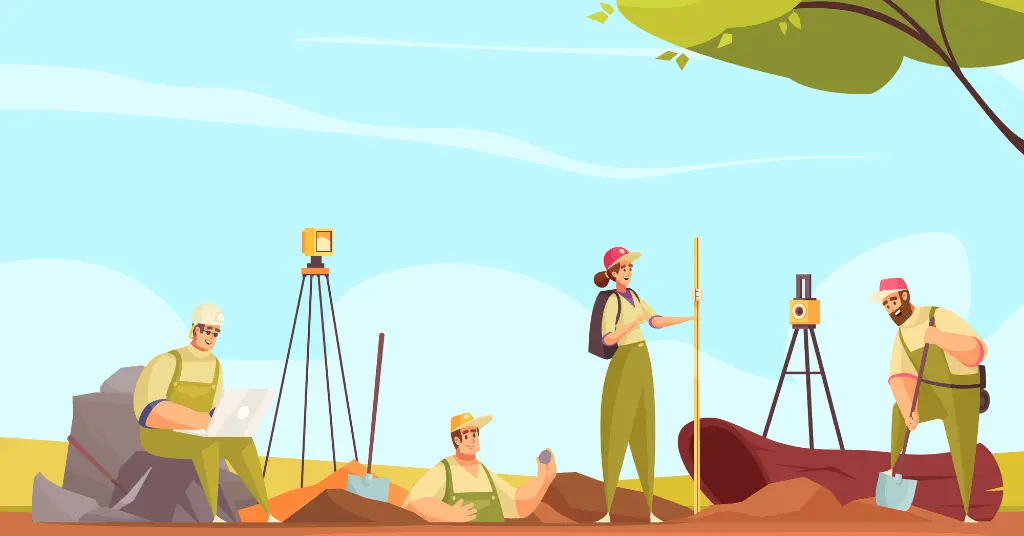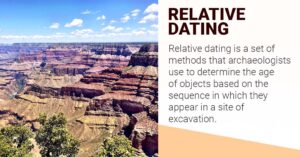AI Answer Evaluation Platform Live Now. Try Free Answer Evaluation Now
Archaeological Field Survey
Archaeological field surveys are a fundamental element of archaeological studies that entail the systematic search, identification, and recording of archaeological sites and other cultural remnants over a terrain. Field surveys are regularly done in preparation of excavation or other research operations and are aimed to offer a thorough picture of the distribution, type, and relevance of cultural remains at a specific site.

Some major characteristics of archaeological field surveys include
- Systematic coverage of a specified region: Field surveys are meant to cover a given territory in a systematic and comprehensive fashion, frequently adopting a grid or transect-based technique to guarantee that all areas of the area are covered.
- Use of ground-based and remote sensing methods: Field surveys may employ a number of approaches to discover and document cultural relics, including visual exploration of the terrain, geophysical surveys, aerial photography, and LiDAR.
- Recording and mapping of sites: As sites are found and recorded, archaeologists typically produce sophisticated maps and descriptions of their location, size, and other essential attributes.
- Analysis of survey data: After the survey is complete, the data obtained is evaluated to detect patterns, trends, and other noteworthy components, such as the distribution of various kinds of sites or changes in settlement patterns through time. Field surveys are an important component of archaeological research, building a foundation of information on the distribution and nature of cultural remains in a specific site that may affect subsequent study and management decisions. They are also vital instruments for cultural resource management, helping to identify and preserve locations of historical and cultural importance.
Forms of Archaeological field surveys
There are numerous sorts of archaeological field surveys, each with its own approach and aim. Some frequent categories include:
- Reconnaissance survey: A fast review of a vast region to locate possible archaeological sites. Reconnaissance surveys are typically done utilizing aerial photography, satellite photographs, or other remote sensing technologies to locate sites with high potential for cultural assets.
- Systematic survey: A comprehensive, grid-based investigation of a given region to find and document any cultural artifacts there. Systematic surveys are extensively used to record the quantity and kind of settlement patterns, detect changes through time, or create a baseline for future study.
- Sample survey: A survey of a representative sample of a broader region, commonly used to examine the distribution and density of cultural remnants over a landscape. Sample surveys may be used to examine the possible effect of development or land-use changes on cultural assets. Salvage survey: A quick assessment of an area destined for development or destruction, aimed to find and record cultural relics before they are destroyed. Salvage surveys are typically done in response to crisis situations or in countries where cultural assets are under jeopardy.
- Thorough survey: A full, focused examination of a given region or location, frequently done in anticipation of excavation or other research operations. Thorough surveys are aimed to offer a detailed picture on the nature and value of a given place or region. Each form of survey has its own strengths and limitations, and the choice of survey technique will rely on the research topic, available resources, and cultural asset management goals.
Techniques of Archaeological Field Survey
Archaeological field surveys generally contain a variety of processes for discovering and recording cultural artifacts. Some famous strategies include:
- Visual examination: Archaeologists may perform a visual study of a landscape, searching for surface features such as mounds, walls, or other evidence of prior human activity.
- Geophysical survey: This strategy entails deploying devices such as ground-penetrating radar, magnetometers, or resistivity meters to discover underlying structures. Geophysical surveys may be beneficial in finding underlying features such as walls, floors, or other structures.
- Aerial photography: This strategy entails utilizing aerial pictures or satellite imagery to find probable archaeological sites based on patterns in vegetation or soil color.
- LiDAR: This approach employs laser scanning technology to provide a comprehensive 3D picture of the ground, enabling archaeologists to notice subtle variations in topography that may expose buried riches.
- Ground-truthing: After possible sites have been located using one or more of these processes, archaeologists may undertake ground-truthing to assess the existence and kind of cultural remains.
This might entail constructing test pits or trenches to expose subsurface structures, or completing surface collections of artifacts to estimate the dispersion of cultural assets. Field surveys may utilize one or more of these methodologies, depending on the study aim, available resources, and geographical circumstances. The purpose of any field survey is to locate and record cultural items in a manner that is systematic, thorough, and scientifically rigorous.
Archaeological field surveys are an essential component of the archaeological research process, offering extensive information on the distribution, density, and sort of cultural remains throughout a territory. By employing a number of approaches including eye examination, geophysical survey, aerial photography, and ground-truthing, archaeologists are able to identify and record cultural artifacts in a manner that is systematic, thorough, and scientifically rigorous. The choice of survey approach will depend on the study challenge, available resources, and cultural heritage management goals. Various forms of surveys, such as reconnaissance, systematic, sample, salvage, or intense, each have their own strengths and constraints and are meant to achieve varied purposes. For example, exploratory surveys may be used to find prospective spots across a large area, while specialized surveys may offer extensive information on a single place or environment. Generally, archaeological field surveys are vital for understanding the past and defining cultural asset management alternatives in the present. They set the basis for additional research operations such as excavation, recording, and interpretation, and play a key role in conserving cultural resources for future generations




